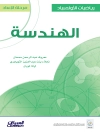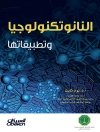While issues of interpersonal boundaries between faculty andstudents is not new, more recent influences such as evolvingtechnology and current generational differences have created a newset of dilemmas. How do we set appropriate expectations regardinge-mail response time in a twenty-four-hour, seven-day-a-week Internet-connected culture? How do we maintain our authority with ageneration that views the syllabus as negotiable?
Complex questions about power, positionality, connection, distance, and privacy underlie these decision points. Thissourcebook provides an in-depth look at interpersonal boundariesbetween faculty and students, giving consideration to the deepercontextual factors and power dynamics that inform how we set, adjust, and maintain boundaries as educators.
This is the 131st volume of this Jossey-Bass highereducation series. New Directions for Teaching and Learning offers a comprehensive range of ideas andtechniques for improving college teaching based on the experienceof seasoned instructors and the latest findings of educational andpsychological researchers.
Tabela de Conteúdo
Editor’s Notes 1
Harriet L. Schwartz
1. Boundaries and Student Self-Disclosure in Authentic, Integrated Learning Activities and Assignments 5
Melanie Booth
Several contemporary pedagogies foster student self-disclosurein classrooms and within assignments. Exploring power, privacy, andthe ethics of response, the author helps faculty reflect on howthey design learning activities and respond to students’sharing of personal information.
2. Managing Boundaries in the Web 2.0 Classroom 15
Bree Mc Ewan
Faculty members who use social media in their teaching face anarray of boundary questions. The author provides a contextualunderstanding of various Web 2.0 spaces, helping faculty to moredeeply consider boundaries with students, particularly regardingappropriate points of connection, self-disclosure, andavailability.
3. Millennial Values and Boundaries in the Classroom 29
Chip Espinoza
Exploring the concept of generations and the ways in whichgenerational differences can lead to boundary conflicts, the authordescribes Millennial values and helps faculty understand how tobridge the generational divide while balancing their own values and Millennial students’ expectations.
4. We’re All Adults Here: Clarifying and Maintaining Boundaries with Adult Learners 43
Melanie Booth, Harriet L. Schwartz
Faculty members who teach adult students face unique boundarychallenges as they may share similar life experiences with theirstudents and may also be working from an andragogical perspective.The authors propose four strategies to help faculty establish, adjust, and maintain boundaries with adult learners.
5. The Coconut and the Peach: Understanding, Establishing, and Maintaining Interpersonal Boundaries with International Students57
Miki Yamashita, Harriet L. Schwartz
Interpersonal boundaries are culturally constructed and thus maybe understood differently by American-born faculty andinternational students. The authors provide examples ofintercultural misunderstandings and strategies for faculty memberswho wish to connect more effectively with internationalstudents.
6. Complicity or Multiplicity? Defining Boundaries for Graduate Teaching Assistant Success 71
Karen Dunn-Haley, Anne Zanzucchi
Graduate teaching assistants (GTAs) face boundary challenges notonly with the undergraduates they teach but also in themultiple-role relationships they have with senior faculty members.The authors describe a comprehensive development program designedto help GTAs cultivate their professional identities and respond toboundary dilemmas.
7. Crossing Boundaries in Doctoral Education: Relational Learning, Cohort Communities, and Dissertation Committees 85
Elizabeth L. Holloway, Laurien Alexandre
Doctoral education has historically promoted a competitiveindividualistic culture among students and faculty. The authorsdescribe their program in which program founders and faculty havereimagined doctoral education as a collaborative and connectingendeavor; they also share the boundary implications and adjustmentsneeded to foster this culture change.
8. Reflection and Intention: Interpersonal Boundaries in Teaching and Learning 99
Harriet L. Schwartz
Reflecting on this volume, the author identifies five themes:increase our awareness of power and positionality; examinereflexive boundaries; explore the assumptions we hold about ourstudents; clarify expectations; and offer transparency.
INDEX 103
Sobre o autor
Harriet L. Schwartz is the author of Interpersonal Boundaries in Teaching and Learning: New Directions for Teaching and Learning, Number 131, published by Wiley.












